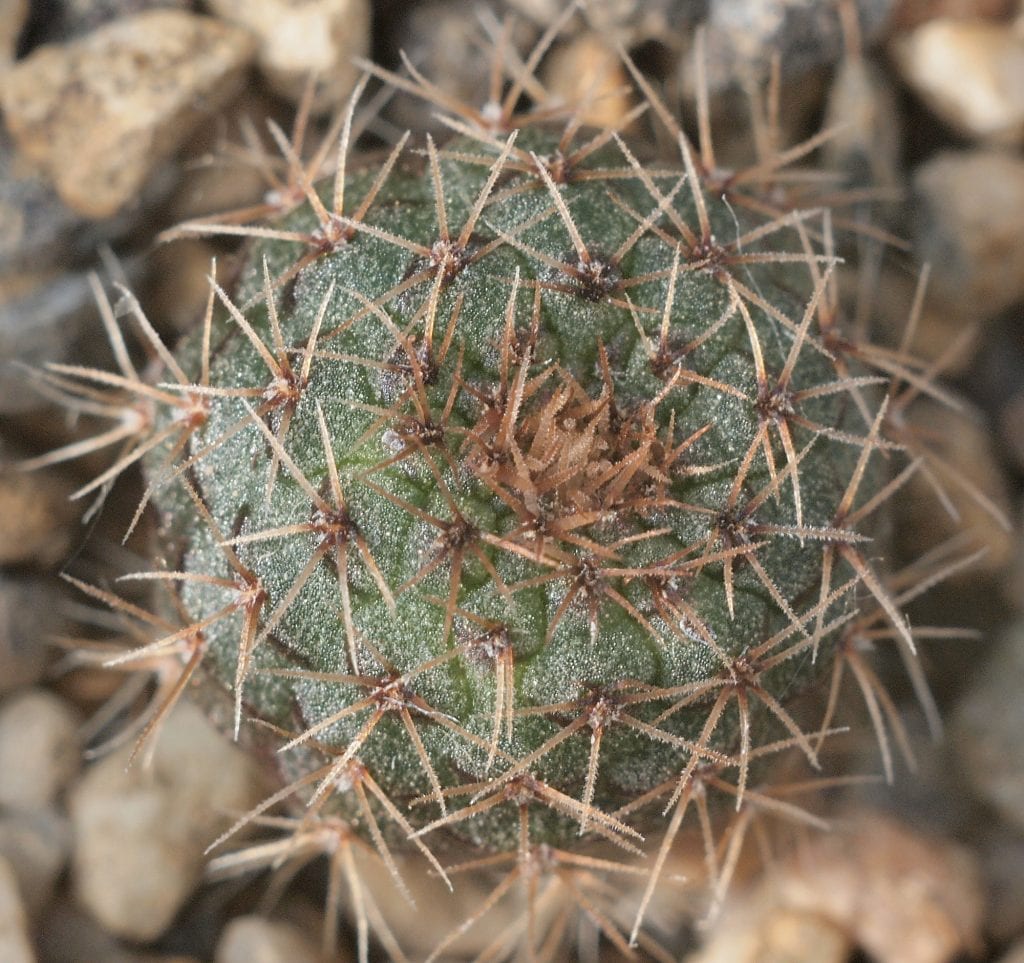
Frailea pumila flower
The Cactaceae It is made up of a very peculiar type of plant: instead of having leaves, it has thorns with which it protects itself from possible herbivorous animals that want to try to eat it. Its armor, size and, above all, the beautiful flowers have made it one of the most successful plants.
It is so decorative, that it is very difficult to take just one home with you, especially when they show you to the Friar, a spectacular collectible cactus.
Characteristics of the Frailea

pumilla frailea
These cacti, which were previously classified in the genus Echinocactus, now have their own: Frailea. These are plants native to South America, the ideal size to keep in a pot throughout their life, as they barely exceed 6cm in height. They have globular or cylindrical shape depending on the species. The ribs are poorly developed, and the body is covered by very short spines.
The flowers, which bloom in late summer and fall, are large, up to 8cm, and are funnel-shaped. They stay open for just one daySo we have to be very attentive if we want to see them in all their splendor. Once pollinated, the fruits begin to ripen, which are fine and dry.
How do you take care of yourself?

Chestnut friar
If you want to have one or more copies, take note of our advice 🙂:
- Location: outside, in full sun.
- Substratum: it must have good drainage. You can use black peat mixed with perlite in equal parts, or opt for sandy substrates (akadama, pumice, river sand).
- Irrigation: moderate in summer, somewhat scarcer the rest of the year. The substrate must be allowed to dry before watering, as it does not tolerate waterlogging.
- Subscriber: During spring and summer it must be paid using cactus fertilizers -which you will find for sale in nurseries-, or with Nitrofoska or Osmocote, pouring a small spoonful on the surface of the substrate once every 15 days.
- Transplant: every two years, in spring.
- Multiplication: by seeds or by separation of suckers in spring-summer.
- Rusticity: does not stand the cold. If you live in an area where the temperature drops below -1ºC you have to protect it inside the home, placing it in a room where a lot of natural light enters.

Phrailea phaeodisca
Have you heard of this cactus?